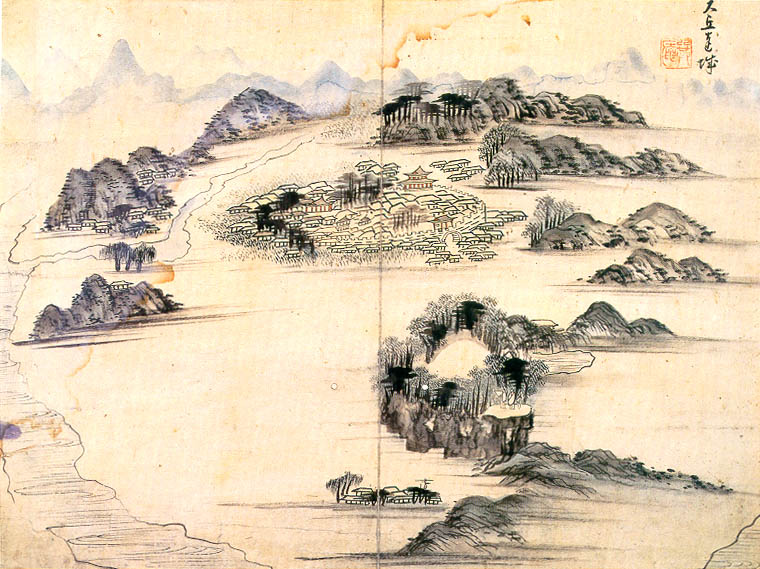|
Daegu Metro
Daegu Metro () is a metro system that serves primarily the South Korean city of Daegu. It encompasses the three lines operated by Daegu Transportation Corporation (DTRO)—Line 1, Line 2, and Line 3—as well as the Daegu–Gyeongbuk Line (Daegyeong Line), a commuter rail operated by Korail. The system serves as the backbone of public transportation within the city and is gradually expanding into the surrounding North Gyeongsang Province, Gyeongsangbuk-do region. As of 2015, the number of average daily passengers is 186,992 people for Line 1, 177,984 people for Line 2, and 69,127 people for Line 3. History The construction of Daegu Metro was recommended to the city after the City of Daegu conducted the research in 1985 to find the ways to improve the city's transit. Following the establishment of the committee to oversee the new metro transit construction in September 1989, the study was conducted from 1989 to 1990 to evaluate whether the construction project was feasible. Th ... [...More Info...] [...Related Items...] OR: [Wikipedia] [Google] [Baidu] |
Daegu
Daegu (; ), formerly spelled Taegu and officially Daegu Metropolitan City (), is a city in southeastern South Korea. It is the third-largest urban agglomeration in South Korea after Seoul and Busan; the fourth-largest List of provincial-level cities of South Korea, metropolitan city in the nation with over 2.3 million residents; and the second-largest city after Busan in the Yeongnam Regions of Korea, region in southeastern South Korea. Daegu and the surrounding North Gyeongsang Province are often referred to as Daegu-Gyeongbuk, with a total population of over 5 million. Daegu is located in south-eastern Korea about from the coast, near the Geumho River and its mainstream, Nakdong River in Gyeongsang Province. The Daegu basin is the central plain of the Yeongnam List of regions of Korea, region. In ancient times, the Daegu area was part of the proto-kingdom Jinhan. Subsequently, Daegu came under the control of the Silla Kingdom, which unified the Korean Peninsula. During th ... [...More Info...] [...Related Items...] OR: [Wikipedia] [Google] [Baidu] |
Dong District, Daegu
Dong District () is a '' gu'' (district) in northeastern part of Daegu of South Korea. Daegu itself lies in the southeastern part of the Korean Peninsula. It has a population of 343,678. The district covers 182.35 km², for about 20% of Daegu's total area. Dong-gu first emerged as the "eastern district office" () in 1938. It achieved ''gu'' status in 1963. In 1998, the administrative divisions were reorganized, and the former 26 ''dong'' were reorganized as 20 ''dong''. Administrative divisions * Ansim-dong * Bangchon-dong * Bullobongmu-dong * Dongchon-dong * Dopyeong-dong * Gongsan-dong * Haean-dong * Hyomok-dong * Jijeo-dong * Sinam-dong * Sincheon-dong Education International schools in Dong-gu include: *Daegu International School *Daegu Chinese Elementary School or Korea Daeguhwagyo Elementary School (한국대구화교초등학교) [...More Info...] [...Related Items...] OR: [Wikipedia] [Google] [Baidu] |
Hangul
The Korean alphabet is the modern writing system for the Korean language. In North Korea, the alphabet is known as (), and in South Korea, it is known as (). The letters for the five basic consonants reflect the shape of the speech organs used to pronounce them. They are systematically modified to indicate Phonetics, phonetic features. The vowel letters are systematically modified for related sounds, making Hangul a featural writing system. It has been described as a syllabic alphabet as it combines the features of Alphabet, alphabetic and Syllabary, syllabic writing systems. Hangul was created in 1443 by Sejong the Great, the fourth king of the Joseon dynasty. The alphabet was made as an attempt to increase literacy by serving as a complement to Hanja, which were Chinese characters used to write Literary Chinese in Korea by the 2nd century BCE, and had been adapted to write Korean by the 6th century CE. Modern Hangul orthography uses 24 basic letters: 14 consona ... [...More Info...] [...Related Items...] OR: [Wikipedia] [Google] [Baidu] |
Busan Metro
The Busan Metro () is the urban rail system operated by the Busan Transportation Corporation of Busan, South Korea. The metro network first opened in 1985 with seventeen stations, making Busan the second city in South Korea and third in the Korean Peninsula (after Seoul and Pyongyang) to have a metro system. The Metro itself consists of 4 numbered lines, covering of route and serving 114 stations. Including the BGL and the Donghae Line, the network covers of route and serving 158 stations. All directional signs on the Busan Metro are written in both Korean and English, and the voice announcement in the trains indicating the upcoming station, possible line transfer and exiting side are all spoken in Korean, followed by English. Station transfer announcements are first in Korean, followed by in English, then in Mandarin, and finally in Japanese. Announcements at stations for arriving trains are in Korean, followed by English, then Japanese and Mandarin. All stations are number ... [...More Info...] [...Related Items...] OR: [Wikipedia] [Google] [Baidu] |
Donghae Line
The Donghae Line () is a railway line connecting Busanjin station to Samcheok station in South Korea. The literal meaning of its name, the "East Sea Line," reflects its position along the nation's East coast. It merged with the Donghae Nambu Line on December 30, 2016, and will merge with the Donghae Bukbu Line. In January 26, 2018, the East Sea Line was partially extended to Yeongdeok Station, and on January 1, 2025, the line between Yeongdeok Station and Samcheok Station was opened. Stations Major stations along the line include (in order): * Bujeon station, terminal station of the line and terminus of the Bujeon Line * BEXCO station, where the G-Star gaming event is held * Sinhaeundae station, a popular resort beach in eastern Busan * Gijang station * Taehwagang station (formerly Ulsan), major industrial city and terminus of the Jangsaengpo and Ulsanhang Lines * Gyeongju station (Singyeongju), historic city * Pohang station, seaport and industrial city * Samcheok stat ... [...More Info...] [...Related Items...] OR: [Wikipedia] [Google] [Baidu] |


